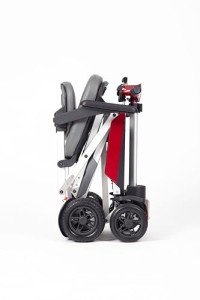What To Do To Determine If You're Ready To Go After Mobility Aids
Understanding Mobility Aids: Enhancing Independence and Quality of Life
As society continues to age and individuals progressively seek methods to preserve independence, the need for mobility aids has actually never ever been more essential. Mobility aids, which incorporate a variety of devices developed to help individuals with strolling or moving around, play an important function in promoting mobility, improving safety, and enhancing overall quality of life. This blog site post will explore the various types of mobility aids, their advantages, factors to consider for choice, and answer some frequently asked questions.
Kinds Of Mobility Aids
Numerous mobility aids are readily available, each created to resolve specific requirements. compact lightweight scooters following table sums up some of the most typical kinds of mobility aids and their functions.
Type of Mobility Aid
Description
Best Suited For
Key Features
Walking canes
A handheld stick offering assistance and balance.
People who require very little help.
Light-weight, portable, adjustable height.
Walkers
Four-legged frames offering stability.
Those needing considerable support while strolling.
Foldable, some with wheels, included safety functions.
Rollators
Wheeled walkers with a seat for resting.
Individuals requiring mobility with the choice to rest.
Brakes, baskets for individual items, adjustable height.
Wheelchairs
Chairs with wheels for people with restricted mobility.
Those not able to stroll or needing substantial support.
Manual or powered options, personalized seating.
Scooters
Motorized devices for larger distances.
People with limited stamina but needing independence.
Various sizes and designs, often transportable.
Crutches
Assistance devices positioned under the arms or lower arms.
People recuperating from lower limb injuries.
Adjustable, lightweight, requires upper body strength.
Stairlifts
Mechanical devices for moving between floorings.
Users dealing with difficulties in multi-level homes.
Personalized for different staircases, automated.
Benefits of Mobility Aids
Mobility aids offer a variety of advantages that can significantly boost the lives of people dealing with mobility difficulties. Some noteworthy benefits consist of:
Increased Independence: Mobility aids empower people to move freely without counting on others for assistance, consequently enhancing their self-confidence and self-esteem.
Improved Safety: Using mobility aids can decrease the threat of falls and injuries, specifically for older adults or those with balance problems.
Improved Quality of Life: By helping with mobility, people can take part in social activities, attend events, and take pleasure in life more fully, adding to much better psychological and mental health.
Rehab Support: After surgical treatment or injury, mobility aids provide essential assistance and stability, helping in healing and rehabilitation procedures.
Ease of access: Many mobility aids are created to be utilized both inside and outdoors, ensuring that people can browse various environments with ease.
Factors to Consider When Choosing Mobility Aids
Selecting the appropriate mobility aid requires mindful factor to consider of numerous elements, consisting of:
Factor
Factors to consider
User's Needs
Assess the level of mobility needed; think about whether the user requires short-term or long-lasting assistance.
Physical Limitations
Examine the user's strength, balance, and coordination to figure out the best kind of aid.
Setting
Think about the main environments where the help will be used, such as home, outdoors, or specific surfaces.
Weight and Portability
Ensure that the chosen gadget is manageable concerning portability and storage, especially for outdoor usage.
Spending plan
Mobility aids can be found in a variety of rates; think about insurance protection and readily available funding choices.
Adjustability
Select aids that can be adjusted for height and convenience to accommodate growth or altering requirements.
Regularly Asked Questions About Mobility Aids
1. How do I know if I need a mobility help?
Lots of aspects can signify the need for a mobility aid, such as problem walking or balancing, fatigue while standing, or a current surgical treatment affecting mobility. Consulting with a healthcare specialist can offer assistance customized to specific requirements.
2. What types of mobility aids are covered by insurance?
Coverage varies between insurers, however most provide choices for durable medical devices, which usually consists of wheelchairs, walkers, and some types of canes. Talk to your insurance coverage service provider for specific coverage information.
3. Can mobility aids be used outdoors?
Yes, numerous modern-day mobility aids are designed for outdoor use. Rollators, scooters, and some walkers are equipped with functions for stability and ease of usage on different surface.
4. How do I keep my mobility help?
Regular maintenance involves looking for any wear and tear, guaranteeing that parts such as wheels, brakes, and frames are operating properly, and cleaning up the equipment as needed. Following the producer's standards is vital for safety.
5. Is there a threat of becoming dependent on mobility aids?
While some users might end up being reliant on mobility aids, they are developed to promote independence and mobility. Slowly utilizing a mobility aid can boost confidence and help maintain physical strength and coordination.
Mobility aids are vital tools that empower individuals to overcome physical obstacles, promoting independence and improving lifestyle. By understanding the numerous kinds of mobility aids available, their advantages, and important elements for consideration, households and caregivers can make informed choices that best fulfill the requirements of their loved ones. With the ideal assistance, those with mobility challenges can lead satisfying and active lives, free to check out the world around them.
